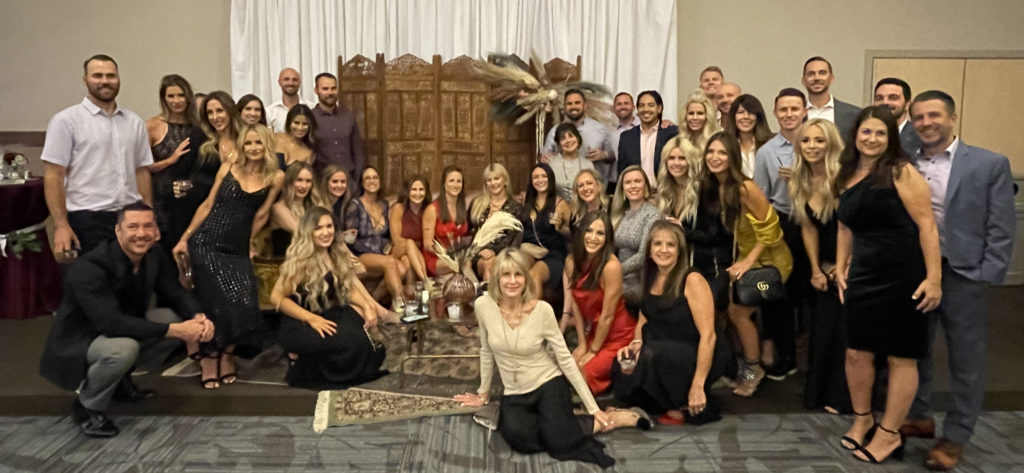You are now leaving the Strong Valley Wealth & Pension, LLC ("Strong Valley") website. By clicking on the "Schwab Alliance Access" link below you will be entering the Charles Schwab & Co., Inc. (“Schwab”) Website. Schwab is a registered broker-dealer, and is not affiliated with Strong Valley or any advisor(s) whose name(s) appears on this Website. Strong Valley is/are independently owned and operated. Schwab neither endorses nor recommends Strong Valley. Regardless of any referral or recommendation, Schwab does not endorse or recommend the investment strategy of any advisor. Schwab has agreements with Strong Valley under which Schwab provides Strong Valley with services related to your account. Schwab does not review the Strong Valley website(s), and makes no representation regarding the content of the Website(s). The information contained in the Strong Valley website should not be considered to be either a recommendation by Schwab or a solicitation of any offer to purchase or sell any securities.
As Christmas sales loom, we face an endless array of sparkly, shiny and occasionally innovative items. As an investor, you run into a similar phenomenon that requires you to ask, “Are investment offerings truly innovative, or simply improvements to existing technologies and services?”
Creating new products is far from a sure thing, of course. In fact, a study of more than 500 executives revealed that while almost one in five rated innovation as a top strategic priority and two-thirds depend on innovation for long-term strategy success, many companies expressed disappointment in returns from investments in innovation.
That said, investing in the right innovation – Facebook and not Myspace, for instance – brings a bonanza. Companies widely acknowledge that new products drive real growth. Your best investment strategy may well be firms’ unceasing need to move forward.
Consider the book Generations: The History of America’s Future, published in 1991 and written by William Strauss and Neill Howe. Although it has nothing to do with investing and offered little economic insight, its messages can be extended to how we invest.
The book’s two primary messages: First, we tend to get along better with our grandparents than with our parents, or at least identify more closely with our grandparents’ beliefs and behaviors more than with than our parents’.
Second, each generation approaches development and discovery in a different manner from that of the preceding generation. One generation creates, and the next generation extends or improves on the innovation.
For example, folks born in the 1880s invented many things we use today, such as phones and radios. The next generation, born in the 1920s, largely improved everything they touched. The first generation made the cars, and the next added air conditioning, automatic transmissions and power windows.
Today, we see that baby boomers created many innovative technologies that affect how we communicate, such as cellphones and the Internet. The current young generation makes the boomers’ innovations better, faster, cheaper and more accessible. Suddenly, today’s business environment seems flush with billionaires younger than 30.
Many of these young and rich entrepreneurs made fortunes in relatively new technologies that didn’t exist when they were born: social networking, mobile applications and cloud-storage computing systems.
This phenomenon is both fascinating and important to understand as an investor. In years past, 20-somethings invented or improved, depending on their generation. These people were often older than 40 before their voices resonated in global markets and changed the world in general – and the business world especially.
Today, innovation, introduction and acceptance move at warp speed. Take cellphones, which Americans hang on to longer than in recent times but still replace (usually with an upgrade) less than every two years.
Changes range from easier access via emerging technologies to ripples in capital markets. Speed and change remain undeniable and important and increasingly harder to ignore for long.
Recollecting the frenzy of your recent Christmas shopping, did you notice the so-called new offerings, and ask yourself if they were improvements on existing products and services or true innovations?
The answer sheds light on the areas where financial resources flow. Do capital markets invest in areas that make televisions bigger and brighter? Absolutely.
Are manufacturers able to charge more for the products? It doesn’t appear so. The big money seems to be in innovations, particularly if you want to get wealthy before middle age.
Something to think about as we invest.
Financial capacity – the ability to manage your finances in your own best interest – involves everything from paying bills to reading a brokerage statement and weighing an investment's potential risks and rewards. And preparing for the potential decline of that capacity is as important as planning for long-term-care expenses or keeping your estate plan up to date. Declining financial abilities may not only result in a few unpaid bills but also leave you vulnerable to financial abuse and exploitation, drain your nest egg, and place heavy burdens on your loved ones.
Nobody likes to think about financial decision-making ability declining with age. Yet "it's extremely common. In fact, I might say it's inevitable," says Daniel Marson, a neurology professor at the University of Alabama at Birmingham. While many people assume they'll only need help managing their finances if they develop dementia, the normal aging process can adversely affect faculties such as short-term memory and "fluid" intelligence, or the ability to process new information, Marson says. "Just the fact that you're 70 or 80 years old may be impacting your financial skills," he says, "quite apart from the fact of whether you have Alzheimer's or any cognitive disorder of aging."
To be sure, many people remain perfectly capable of managing their own money as they age. Indeed, among people ages 18 to 86, credit scores increase by an average of 13 points for each decade lived, according to a recent study by researchers at University of California Riverside and Columbia University.
Yet all older adults should consider organizing and simplifying their finances to make their money easier to manage at an advanced age and prepare for the possibility that someone else may need to step in to help.
As the population ages, regulators, lawyers, doctors and financial advisers are becoming more vigilant in watching for signs of diminished financial capacity. More financial advisers are getting advance written permission from older clients to speak with a trusted family member or friend if concerns arise about the client's financial decision-making. The North American Securities Administrators Association approved a model rule that requires financial advisers to report suspected financial exploitation of seniors to the state securities regulator and adult protective services. And the Investor Protection Trust, a nonprofit investor education organization, is training doctors and lawyers to recognize when older people may be vulnerable to financial abuse.
But seniors themselves, along with family members and close friends, may be best positioned to recognize signs of diminishing capacity. And simply watching for red flags isn't enough. It's best to start planning for possible problems before warning signs appear.
Your first step: Organize and simplify your finances. Complex investments and scattered bank, brokerage and retirement accounts raise the odds that you, or someone acting on your behalf, will make costly financial mistakes. Spreading your assets across many different accounts also makes it tougher for financial institutions to detect fraud in your accounts.
Take a hard look at each of your accounts and challenge yourself to describe its purpose in one sentence. Is the account meant to generate income to help cover daily living expenses? Is it an emergency fund? Or is it a legacy you plan to leave to your child? Consider writing that sentence at the top of each of your most recent account statements. That can help you – and anyone who might later help manage your money – think about how to allocate and rebalance those accounts.
To further simplify your financial life, automate bill payments, and arrange for direct deposit of regular income sources, such as Social Security. To minimize solicitations and reduce the risk of fraud, put your telephone number on the National Do Not Call Registry by going to www.donotcall.gov or calling 888-382-1222.
Once you've simplified your finances, make a list of all your assets along with key contacts such as financial advisers, accountants, insurance agents and lawyers. Such a list can be "a lifesaver" after someone has lost capacity "and you have no idea how many accounts they have, who their attorney is or where their tax documents are.
Next, consider whom you might trust with all the information you've just organized. Which family members, friends or professionals might help you manage your money as you age?
One place to start: If your spouse generally steers clear of all things financial, get him or her involved now. Financial novices who are suddenly forced to take over household money management – perhaps because a spouse has become incapacitated – are particularly vulnerable to making costly mistakes, according to a recent study by the Center for Retirement Research at Boston College. Make sure your spouse knows how to handle things in case something happens to you.
Next, consider getting another trusted family member or friend involved in your finances. This doesn't mean turning over the keys to your financial life. Instead, you're helping that person learn how you manage your money – in case she needs to take some control later on – and getting another set of eyes to help you watch for unpaid bills or suspicious activity.
If you need additional help, and no close friends or relatives are up to the task, consider hiring a daily money manager to help pay the bills, deal with creditors and organize tax documents, among other services. Expect to pay anywhere from $50 to $150 per hour or more, depending on where you live and the level of service provided.
The profession is essentially unregulated, so it's critical to vet a daily money manager carefully. Ask how long they have been working as a daily money manager, whether they carry errors and omissions insurance, and whether they have any professional certification. The American Association of Daily Money Managers offers a "professional daily money manager" certification, which requires a criminal background check and passing a written exam, among other requirements. You can search for managers who have earned that designation at www.aadmm.com. The money manager should also be able to provide references and send regular reports to the client and trusted family members detailing all financial activity.
As family members begin to help out informally, it may be tempting to add a relative's name to your bank account so that person can help pay the bills. That may work fine as a short-term solution, but it shouldn't be your primary long-term plan for dealing with a potential loss of financial capacity. Joint accounts can easily lead to disputes over misuse of funds, inheritance and other issues. If you add your daughter's name to your bank account, for example, that account will go to her when you die, even if you intended to split your money evenly among your children.
Instead of relying on such ad hoc arrangements, all seniors should have a durable power of attorney for finances. With this document, you designate someone you trust, known as your "agent," to manage your finances. The "durable" part is key – that means the power of attorney remains in effect even if you become incapacitated. While you have capacity, you can always change your agent or revoke the document completely.
Placed in the wrong hands, a poorly crafted power of attorney leaves the door wide open for financial abuse and exploitation. So, it's critical to not only choose an agent--and backup agents – whom you trust completely, but also to work with a lawyer well-versed in elder law when preparing the document. Find elder-law attorneys in your area at the National Academy of Elder Law Attorneys website.
To minimize the risk of abuse, the power of attorney can limit the agent's ability to make gifts or transfer assets to a certain dollar amount and restrict changes in life-insurance and retirement-plan beneficiaries.
The more you trust your agent, however, the more flexibility you'll have to customize the power of attorney to meet your needs. Seniors concerned about planning for long-term-care costs, for example, might grant the agent extraordinary powers such as the ability to transfer assets to a trust. If you're facing nursing-home costs of $100,000 a year and hoping to rely on Medicaid while preserving some assets for your spouse's living expenses, a power of attorney that grants such broader authority may be critical.
Having power of attorney does not give your agent the authority to handle your Social Security benefits. If the Social Security Administration is alerted to the fact that you may need help managing your money, it will investigate; a family member or friend can request such an investigation. Then, if necessary, the agency will select a "representative payee" to manage your benefits. Payees are generally family members or close friends, and the administration says it will consider the wishes of beneficiaries when making the selection. But in practice, many people never need a representative payee because their benefits are directly deposited into a bank account that's accessible to their agent under a financial power of attorney.
The time to take all these planning steps, of course, is well before you have problems managing your money. But no matter where they are in the planning process, seniors and their loved ones should keep watch for signs that financial capacity is slipping. That may be a signal to accelerate your planning or reach out to trusted family members for help.
There are at least six key warning signs to watch for. Is it taking Mom much longer than it did previously to pay the bills or perform other financial tasks? Is she having trouble understanding visual financial information, such as reading her bank statement? Is she having trouble doing mental math, such as figuring the tip in a restaurant? Is there a loss of conceptual understanding, such as confusion about why she needs to make her mortgage payments? Is her once-tidy desk now stacked with old, unopened mail? And is she investing more aggressively than she did in the past, focusing on the potential benefits of an investment rather than the risks?
Remember, these issues are only warning signs if they represent a change from the person's prior behavior. But once you start seeing warning signs, don't ignore them because usually, bad things happen in their wake.
How do you carve up your portfolio pie to minimize risk and protect it from market troubles, like what we saw through Thanksgiving of 2018, for example?
Do you even remember that through Thanksgiving week 2018, the S&P 500 went negative, led by the FAANG group which officially entered bear market territory after dropping more than 20% from their 52-week highs? Probably not.
Do you even remember that shortly after Thanksgiving 2018, the S&P 500 kept posting red numbers on its way to a -9.18% return for the month of December 2018? Probably not.
Hopefully you will remember this: the best way to carve up your portfolio pie is through smart asset allocation, aided by diversification and rebalancing.
Diversification means the mathematical process of reducing risk through the use of many different types of assets. Diversification combines mutual funds, ETFs, closed-end funds, stocks, bonds and other securities that are not correlated. In other words, one asset class typically zigs while the other zags.
Asset allocation is when risk versus reward is balanced, according to the risk capacity, risk tolerance, time frame and goals of the investor. Many people believe that when they have more investments, it means they are more diversified.
Wrong.
When allocating assets, you need to do two things:
So, it is not necessarily how many pieces you have in your pie, but what makes up the ingredients of the pieces to begin with. You have the entire global economy to locate them. You could cut the pie into very tiny pieces. However, those likely would be similar to other tiny pieces nearby.
Work from the broader big picture on down, using specific investments for defined asset classes. And pay attention to rebalancing.
Rebalancing is a financial planning tool designed to get your portfolio back to your original allocation target. Why? Because with time your allocation drifts, and you take on a different risk profile as a result of this drift.
Let’s assume you are not investing in individual stocks, which may go to zero for a complete loss. Instead you invest in index funds, which give you steadier diversification. By definition, all the companies in the index would need to go to zero for you to suffer a complete loss.
Let’s also assume you have a global asset allocation with indexed exposure to many different asset classes. What happens when, say, your Energy index fund declines and now makes up a smaller piece of your portfolio than you want in your asset allocation pie (the Energy sector is down over 40% YTD through November 20th)?
Or if the Information Technology portion of your portfolio is too big (the Information Technology sector is up over 30% through November 20th)?
Your next step is to rebalance.
You sell off a portion of your portfolio that has expanded too much and buy into the asset class that has declined. In other words, you sell some of the Information Technology index fund and buy more of the Energy index fund (this is just for illustrative purposes and not a recommendation to buy or sell one asset class for another by the way).
Remember the old saying, “Buy low, sell high?” Well, rebalancing means you are doing just that, except you sell high first, then buy low. You sell some of what has gone up to buy more of what has gone down, thus restoring your desired asset allocation pie and remaining consistent with your risk profile.
But beware: selling “winners” and buying “losers” goes against the grain emotionally, of course. So, you make this a regimen in order to eliminate some of the emotional challenges.
You probably make pretty good pies. Your pies might even rival those from your grandmother. But asset allocation pies might taste better when constructed by a professional baker – your financial advisor.
But most importantly, know that your financial advisor will create an asset allocation pie specifically tailored to your tastes (financial planning).
Strong Valley Wealth & Pension was a gold star sponsor and participated in this day of honor to show gratitude for the sacrifices made for us to enjoy the lives we live.
This important “In Their Honor” golf tournament originally began in 2005 with a very small field of close friends, in commemoration of Corporal Jeremiah Baro and Lance Corporal Jared Hubbard who were killed in action in 2004. However, the brothers of Jared Hubbard immediately joined the Army to honor their brother. The youngest of the boys, Nathan Hubbard, was killed in action in 2007 leaving the oldest brother Jason no choice but to return home. In consideration of family and sacrifice, the Hubbard Act was passed in July of 2008 by President Bush; allowing the sole survivor of families to take Honorably Discharge and return home with full benefits.
Today the Annual Veterans Day tournament honors eight graduates of Buchanan High School: Rowan Walter, Jared Hubbard, Jeremiah Baro, Anthony Butterfield, Matthew Abbate, Brian Piercy, Nathan Hubbard, and Nicholas Eischen, now known as the “Buchanan Eight.”
As our troops return home, many struggle with injuries and health conditions that make the challenges of life even more demanding. Our contribution helps with the rehabilitation needs of many, assisting in the inexperienced battles with both physical and emotional disabilities. Our local Veteran’s Affairs Medical Center does their part to help get these men and women the treatment and care they deserve, with hopes they too can live the American Dream.




A business will is far more than a legal document designed to transfer assets upon the death of an owner or partner. It is a comprehensive estate planning tool that can include everything from management plans, and other documents necessary for a company’s continued operation and future health, to shareholder buy-sell agreements.
An estate planning team consisting of a lawyer, accountant, and qualified financial and insurance professionals can help you develop a business will, including all necessary documentation. There are established methods for transition that can help leave your company and successor management free from unnecessary worry or jeopardy. In addition, through carefully planned life insurance and disability income insurance, the transition can be properly funded to help avoid substantial losses that might otherwise occur.
A business will should be clearly written to address such questions as:
A business will is essential for sole proprietorships and partnerships because they must cease operation upon the death of an owner or partner. If a family member or executor attempts to operate the business without the proper authority that can be granted through a will, he or she may be held personally liable for all debts incurred and any decline in the value of the business. In contrast, the deceased’s heirs are entitled to all profits from the business.
For sole proprietors the business ends and the business assets and liabilities become the assets and liabilities of the estate. If a sole proprietor does not want to change the form of business ownership, but does want to retain the business, the planning concerns involving the administration of the business during the estate settlement period, and the continuation of the business after the estate has been settled, need to be addressed. The proprietor’s will must give the executor certain powers during the period of estate administration such as: 1) the power to retain the business interest indefinitely; 2) the power to do everything possible to operate the business successfully; 3) the power to re-organize the business, incorporate it, or merge it with another business; and 4) the power to borrow money, if necessary, to help the estate meet its need for liquidity.
Some objectives can also be accomplished while the owner is alive—through the purchase of shares by the successor owner or manager, or through the creation of a corporation, which has continuing life as long as a shareholder is competent to vote the stock and make business decisions.
To effect a smooth transition, upon the owner’s death, suppliers and customers should be notified through appropriate means that a successor business is in place and will assume the responsibilities and obligations of the prior business.
The surviving spouse should be kept informed of decisions regarding the succession or disposition of the business— for his or her own welfare, as well as to help maintain the stability of the company throughout the transition.
Employees need not be given specific details of the transition or confidential information, but they will appreciate being informed that arrangements have been made to safeguard their welfare.
Planning for the transition of the business you have spent many years building is not an easy task. However, taking steps now to prepare a business will and the accompanying documents can help ensure your business continues according to your wishes.
Every day we’re bombarded with reports of what’s hot and what’s not – fueling a fear-of-missing-out (FOMO) on some great investment opportunity. Heck, there is even a new exchange traded fund with FOMO in its name. But a diversified portfolio is still the best way for you to maximize returns while minimizing risk.
The anxiety that we feel when we believe something better is happening elsewhere isn’t unique to investing. Fear of missing out is a phenomenon that affects many aspects of our daily lives, and it’s far more prevalent than you may think.
Indeed, FOMO was added to the Oxford English Online Dictionary in 2013, along with such other contemporary expressions as selfie and twerk. The emergence of social media has only compounded the FOMO effect.
How FOMO affects the way you think about your investments is more worrisome. This summer, as we started gathering at neighborhood barbecues again, you are likely to have heard some neighbor bragging how his portfolio outperformed the S&P 500 Index so far in 2021. Almost immediately, you might be dissatisfied with your portfolio and wonder why it wasn’t achieving the same results.
You might get just as upset with your diversified strategy when every media outlet is constantly reminding you about the stellar performance of some particular stock or sector. There’s a huge temptation to change course and invest in the latest hot streak. Fueling the urge is so-called "recency" bias, a belief that recent financial trends will continue.
But changing your portfolio to take advantage of a run that has already taken place is foolish. Think about it: You would be selling assets that may be undervalued relative to the market in order to buy assets that have scored huge gains and are likely more expensive.
Moreover, history is littered with examples of hot trends gone cold. In the late 1990s, many investors wanted to abandon their diversified portfolios and buy booming technology stocks. In the mid-2000s, it seemed everyone wanted to borrow money to flip real estate. A few years later, investors were worried about a double-dip recession and wondered if they should sell their stocks and buy gold instead. Now, cryptocurrency is all the rage.
In each case, FOMO caused investors to be more afraid of missing a bull market than suffering large losses. In hindsight, changing your long-term investment strategy would have been a drastic mistake.
When everyone from those in the media to your own acquaintances tells you to place heavy bets on one or more investment categories that have recently done well, don’t be fooled by FOMO. You could lose big. That’s why a diversified portfolio strategy is still the best chance to achieve long-term investment success.
How does a wise investor avoid falling prey to FOMO? That’s easy, just remember the adage: “If it sounds too good to be true, then it probably is.”
To avoid losing large amounts of money due to your FOMO, the best move is to diversify your holdings. Diversifying your assets among various types of investments and asset classes allows you to get a better risk-adjusted return. You spread the risks around. Over the long term, you will reap the benefits of many investment sectors, rather than suffer massive losses when a bubble bursts.
Your financial advisor is an expert on diversifying your investments by helping you invest wisely in various asset classes and help you combat your FOMO.
Contributing to charities comes with a load of tax rules. Here’s are a few things to think about:
What kind of donation will you make this year? The maximum you can deduct depends on whether you donate cash or property and on the type of charity as defined by the Internal Revenue Service:
In most years, any donation generally maxed out at 50% of your yearly income minus deductions, or adjusted gross income (AGI). And deductions for donations to certain groups such as veterans’ organizations, fraternal societies, nonprofit cemeteries and others often maxed out at 30% of your AGI.
But guess what? The IRS put a temporary limit on charitable contributions (and this is expected to change yet again, so be careful before you donate).
Taken directly from the IRS website:
“In most cases, the amount of charitable cash contributions taxpayers can deduct on Schedule A as an itemized deduction is limited to a percentage (usually 60 percent) of the taxpayer’s adjusted gross income (AGI). Qualified contributions are not subject to this limitation. Individuals may deduct qualified contributions of up to 100 percent of their adjusted gross income. A corporation may deduct qualified contributions of up to 25 percent of its taxable income. Contributions that exceed that amount can carry over to the next tax year. To qualify, the contribution must be:
Contributions of non-cash property do not qualify for this relief. Taxpayers may still claim non-cash contributions as a deduction, subject to the normal limits.”
To whom do you want to donate? The IRS requires that you give to a qualified organization in the U.S. to claim a deduction. An organization’s merely claiming tax-exempt status doesn’t automatically make your donation deductible.
Many major charities fit the criteria, but double-check that your organization of choice makes the list. The IRS offers a search tool to look for qualifying organizations.
Learn what you may not know. You can never deduct some donations, for example, such as Bibles, gifts to individuals and donations to political parties or candidates. Services provided are also not deductible.
For deductible cash donations, the IRS requires standard documentation of a bank record, payroll deduction or written communication from the qualified organization. This communication must include the name of organization and the date and amount of contribution regardless of the amount donated.
For all donations (cash and property) more than $250, you must show the above documentation, plus a written acknowledgement of the donation’s amount and whether any portion of the donation was in exchange for goods or services.
These few reminders only skim the surface of charitable giving. Best to check with your financial advisor before you give until it hurts.
Cocktails for a Cause was a fun event to attend and support. The ladies of the La Visionaria Guild have been hosting fundraiser events since 2007 to raise funds and develop ongoing community support for Valley Children’s Healthcare. It was through the fundraising efforts of the original Guilds that Valley Children’s Healthcare was constructed in 1952 at its original site.
We are honored to give our support to this Guild, that takes pride in their mission and the history of their founding mothers, with a new Guild endowment to help keep kids healthy where they live, learn and play.




